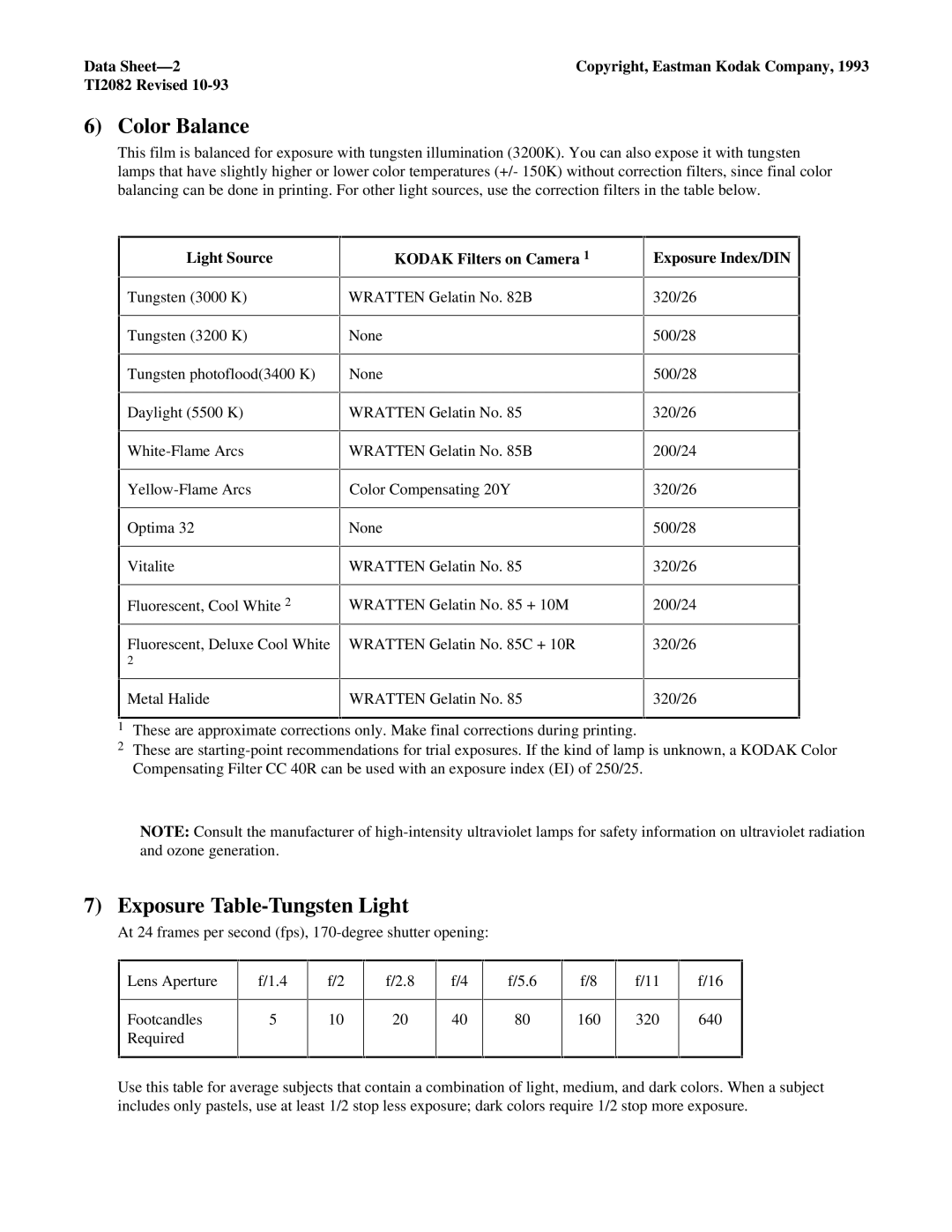
Data | Copyright, Eastman Kodak Company, 1993 |
TI2082 Revised |
|
6) Color Balance
This film is balanced for exposure with tungsten illumination (3200K). You can also expose it with tungsten lamps that have slightly higher or lower color temperatures (+/- 150K) without correction filters, since final color balancing can be done in printing. For other light sources, use the correction filters in the table below.
Light Source | KODAK Filters on Camera 1 |
Exposure Index/DIN
Tungsten (3000 K)
Tungsten (3200 K)
Tungsten photoflood(3400 K)
Daylight (5500 K)
Optima 32
Vitalite
Fluorescent, Cool White 2
Fluorescent, Deluxe Cool White
2
Metal Halide
WRATTEN Gelatin No. 82B
None
None
WRATTEN Gelatin No. 85
WRATTEN Gelatin No. 85B
Color Compensating 20Y
None
WRATTEN Gelatin No. 85
WRATTEN Gelatin No. 85 + 10M
WRATTEN Gelatin No. 85C + 10R
WRATTEN Gelatin No. 85
320/26
500/28
500/28
320/26
200/24
320/26
500/28
320/26
200/24
320/26
320/26
1These are approximate corrections only. Make final corrections during printing.
2These are
NOTE: Consult the manufacturer of
7) Exposure Table-Tungsten Light
At 24 frames per second (fps),
Lens Aperture | f/1.4 | f/2 | f/2.8 | f/4 | f/5.6 |
|
|
|
|
|
|
Footcandles | 5 | 10 | 20 | 40 | 80 |
Required |
|
|
|
|
|
|
|
|
|
|
|
f/8
160
f/11
320
f/16
640
Use this table for average subjects that contain a combination of light, medium, and dark colors. When a subject includes only pastels, use at least 1/2 stop less exposure; dark colors require 1/2 stop more exposure.
